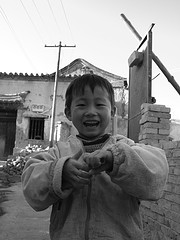
A murdered citizen on 228
Maybe it’s fitting that today, my first February 28th in Taiwan, the island is soaked in a cold, gloomy rainstorm. Er-er-ba, as the day is called here, is perhaps to the Taiwanese what the Holocaust is to the Jews. Like 9-11, the numbers 228 speak for themselves; there’s no reason to give it a more informative name. Everyone knows it’s the day Chinag Kai Shek began a massacre of Taiwanese citizens resulting in some 30,000 butchered. You can read all about it here if you’re not up on the details. Here is a brief description from a correspondent in Taiwan at the time:
On February 27 a policeman of the Taiwan (Formosa) Monopoly Bureau saw a woman selling smuggled cigarettes on the streets of the capital, Taipei. When he tried to seize her tray and money, she pulled away, and he struck her a crashing blow on the head with his revolver butt. She died at his feet. An angry mob gathered, and the police shot into the crowd, killing one person and wounding others. Forthwith a year and a half of gathering hatred for an inefficient, autocratic, corrupt administration exploded into unarmed demonstrations against the mainland Chinese.
China put down the revolt with brutal repression, terror, and massacre. Mainland soldiers and police fired first killing thousands indiscriminately; then, more selectively, hunted down and jailed or slaughtered students, intellectuals, prominent business men, and civic leaders.
It’s a national holiday today in Taiwan, and most businesses are closed. It is to Taiwan’s credit that it acknowledges its own act of barbarism, and that it invites the public to examine it for themselves. (Still, some contend the government hasn’t gone far enough in weeding out the instigators of 228 and that many of the worst offenders have gone unpunished to this day.) I wonder if we’ll ever see a similar national holiday in China commemorating the Tiananmen Square Massacre or the Great Leap Forward or other treats that the CCP bestowed on its citizens.
My first week in Taiwan, Jerome Keating was kind enough to take me to the 228 Museum here. It’s hard to put into words just how upsetting it is to walk through this simple but unforgettable place, where you see hundreds of photos of innocent civilians who were murdered, and all you can do is ask “Why?” It reminded me of walking through the Jewish sector in Prague, where the names of the murdered Jews have been inscribed into the walls. They’re just names, lines of ink, but they say so much. These pictures say so much, and I can never forget them. Some of the victims were so young, and many were killed simply because they were seen in old photographs standing alongside “enemies of the state.”
The fact that Taiwan has grown from a savage place where its Chinese leaders could launch acts of terror that would have made Stalin proud into the prosperous, peaceful nation it is today should hold lessons for each of us, and perhaps give us hope that China, too, might one day shed its mantle of tyranny and become a country of laws and of openness. I see no sign of that happening now, but I probably wouldn’t have seen such signs in Taiwan back in the 1940s or 50s. What will it take? If Taiwan could do it, could the PRC do it as well? What was the turning point, and is China anywhere near such a pivotal moment?
[Note: I promised myself I wouldn’t post anything until later in the week, but the emotions of 228 were too strong to ignore. This had to be written today or never.]


Comment